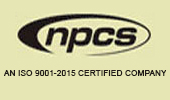Google Search
Search
Already a Member ?
Export Oriented Units, Projects (100% EOU)
The Export Oriented Unit (EOU) Scheme, which had been introduced in the early 1980s remains in the forefront of country’s export production schemes. The main objectives of the EOU scheme is to increase exports, earn foreign exchange to the country, transfer of latest technologies stimulate direct foreign investment and to generate additional employment. The scheme has witnessed many changes over the last twenty-four years in the context of ever changing economic realities. However, the basic premise remains the same. This premise is that the exporters are treated as a special class and given the required tariff, non-tariff and policy support to facilitate their export efforts. Thus, today the EOU Scheme has emerged as a dynamic policy initiative facilitating the exporting community in the task of increased exports. The EXIM Policy, 2002-07 reinforces the importance of Scheme in chapter 6 of the policy. Appendix 14 I of the Handbook of procedures (Vol.1) as amended upto 28- 1-2004 sets out the procedures and benefits of this scheme.
The 100% EOUs fall into 3 categories:
(a) EOUs established anywhere in India and exporting 100% products except certain fixed percentage of sales in the Domestic Tariff Area (DTA) as may be permissible under the Policy.
(b) Units in Free Trade Zones in Special Economic Zones (SEZs) and exporting 100% of their products.
(c) EOUs set up in Software Technology Parks (STPs) and Electronic Hardware Technology Parks (EHTPs) of India for development of Software & Electronic Hardware.
Major Sectors in EOUsare:
-
Granite
-
Textiles / Garments
-
Food Processing
-
Chemicals
-
Computer Software
-
Coffee
-
Pharmaceuticals
-
Gem & Jewellery
-
Engineering Goods
-
Electrical & Electronics
-
Aqua & Pearl Culture
To set up an EOU for the following sectors, an EOU owner needs a special license. EOUs can be set up anywhere in the country and may be engaged in the manufacture and production of software, floriculture, horticulture, agriculture, aquaculture, animal husbandry, pisciculture, poultry and sericulture or other similar activities. Apart from local zonal office and state government, setting up of an EOU is also strictly guided by the environmental rules and regulations.
We can provide you detailed project reports on the following topics. Please select the projects of your interests.
Each detailed project reports cover all the aspects of business, from analysing the market, confirming availability of various necessities such as plant & machinery, raw materials to forecasting the financial requirements. The scope of the report includes assessing market potential, negotiating with collaborators, investment decision making, corporate diversification planning etc. in a very planned manner by formulating detailed manufacturing techniques and forecasting financial aspects by estimating the cost of raw material, formulating the cash flow statement, projecting the balance sheet etc.
We also offer self-contained Pre-Investment and Pre-Feasibility Studies, Market Surveys and Studies, Preparation of Techno-Economic Feasibility Reports, Identification and Selection of Plant and Machinery, Manufacturing Process and or Equipment required, General Guidance, Technical and Commercial Counseling for setting up new industrial projects on the following topics.
Many of the engineers, project consultant & industrial consultancy firms in India and worldwide use our project reports as one of the input in doing their analysis.
We can modify the project capacity and
project cost as per your requirement.
We can also prepare project report on any subject as per your requirement.





